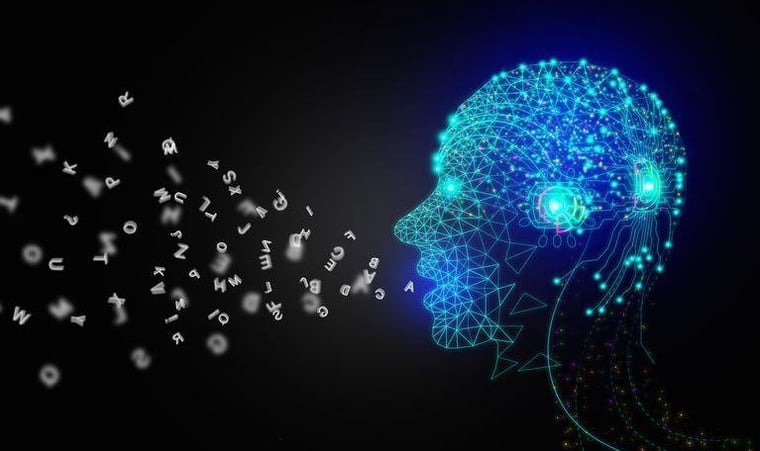AI's Role in Language Services: Enhancing Translation & Interpretation

Artificial Intelligence (AI) is revolutionizing industries unlike any other technology. Ever. Gartner, the world’s leading research and advisory company, predicts global spending on AI software will reach $297 billion by 2027, which is over 19% growth per year.
The language services industry is no exception. We’re seeing AI benefit Language Services Providers (LSPs) and our clients in several ways. Is the human touch becoming obsolete? No. Can AI improve the quality of translation, interpretation and localization? Yes.
At LinguaLinx we employ AI in a number of ways and it’s something our clients increasingly want to know how it can help them. So, let’s look at how AI fits into, and improves, language services.
How AI Reduces Dependency on Manual Translations
AI improves the speed and accuracy of translations while reducing the need for human intervention. It uses sophisticated algorithms to understand and translate text from one language to another, leading to more efficient and consistent results.
It has real-time translation capabilities, which makes for seamless communication across different languages.
How does AI do this? It uses a few key translation tools, which unlike humans can operate 24/7 365 days a year, such as machine translation (MT) and natural language processing.
The Role of Machine Learning and Natural Language Processing
Machine learning is an area where AI uses statistics and previous data to figure out what the LSP is looking for from a translation. It allows AI to translate in the best possible way by understanding what terminology has been used in the past for a particular client.
Basically, it’s doing the hard work and crunching the numbers, or words in this case, to provide the best translation. It’s objective, quick and accurate.
Natural language processing allows machines to understand a language. It interprets the language, and makes sense of it, rather than just reading it.
Imagine you gave a nine year-old a book on Quantum Physics, they might be able to read it – successfully saying each word one after another - but would they understand it? Could they explain it to someone else?
Natural language processing allows machines to really understand the meaning and context of the source language and come up with an accurate translation taking into account the nuances of a language and cultural references.
AI Powered Tools
There are a number of tools that AI uses in the translation process. Here are three of the main ones:
- Translation Memory – This is a database which holds an archive of translated sentences, paragraphs and sections of text. The benefits of a good translation memory is consistency of output and time saving, because when a linguist has translated text once, the work has been done for every time that text needs to be translated in the future.
- Termbase – Terms and term-related information are stored in a termbase. The termbase will also hold rules for the usage of the term and any other reference notes or guidance.
- Quality Assurance (QA) – AI drives QA by powering the tools that human translators need to identify issues with translations and immediately suggest better options. This increases consistency in line with your company’s tone of voice and term base.
Real-Time Translation Tools
Real-time translation tools use tech to allow two people, who don’t speak each other’s language, to have an accurate conversation with only minimal delays. Most of the world carries this ability around with them all the time via their smart phone.
The apps and devices that give us all the ability to have linguistic freedom in multiple languages is driven by conversational AI. Conversational AI uses data, natural language processing and machine learning to recognise human communication patterns so the multi-language interactions feel like a human conversation.
How AI Will Continue to Augment the Translation Process
AI’s role in translation will continue to grow as the technology evolves and becomes even smarter. It’ll make linguists roles easier, simplifying what they need to focus on and allowing them to put their expertise and creativity into their work.
One of the ways this will happen is the development of Neural Machine Translation (NMT) systems. These use artificial neural networks to predict the likelihood of a sequence of words. NMT is a step up from MT because it uses deep learning, and not just glossaries, to provide a better quality of translation.
Making the Language Services World a Better Place
AI is to be embraced. It’s to be harnessed, fed, grown and used to make translations better.
There’s no doubt that AI speeds up the process, makes it more accurate and allows humans to do what they do best – spend their time working on the most important, sensitive or difficult areas of the translation and localization journey.
Harness the Power of AI with LinguaLinx
AI is transforming the language services industry by enhancing translation speed, accuracy, and consistency. At LinguaLinx, we integrate AI to elevate our services, ensuring high-quality, culturally sensitive translations that meet our clients' diverse needs.
Artificial Intelligence significantly improves translation efficiency and quality, reducing dependency on manual processes. Machine learning and natural language processing provide context-aware translations, capturing nuances and cultural references.
AI-powered tools like translation memory, termbases, and quality assurance ensure consistency and accuracy throughout the translation process. Real-time translation tools facilitate seamless multilingual communication, making global interactions smoother.
With over 20 years of experience, LinguaLinx brings unparalleled expertise to delivering top-notch language services.
Our compliance with ISO 17100 and ISO 9001 standards guarantees that our processes meet the highest quality benchmarks.
Trusted by major organizations worldwide, including NYC DOE and the US Census Bureau, we have a proven track record of delivering reliable and accurate translations.
Next Steps: Get a Quote for Your Language Services Needs
Take the next step towards leveraging AI-enhanced language services for your translation, interpretation, or localization projects. Contact us for a free consultation and a customized quote.
Our consultations are free, with no obligation, providing you with a risk-free opportunity to explore how we can meet your needs. With LinguaLinx, your message will never get lost in translation. We ensure that your communications are precise, culturally appropriate, and effective.
Reach out to us today and discover how LinguaLinx can help you communicate seamlessly across languages and cultures.
Experience the LinguaLinx difference – where AI meets human expertise to deliver exceptional language services.






